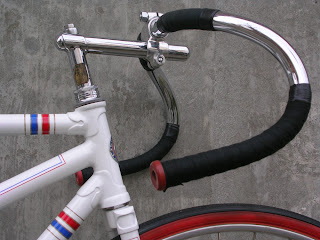Happy Mother's Day!
I suspect that many of gave your mothers flowers, candy or any of the other gifts we associate with this day. I'll bet that none of you gifted your mother one of these:
If you did, you must have even more of a cycling family than the Simeses or Herses ever were!
Many years ago, I gave my mother a Peugeot mixte for Mother's Day. As far as I know, she never rode it. It's probably the one and only thing for which I've ever had to forgive her! ;-)
But there have been so many other things she's done to make it possible for me to ride and do many of the other things that have made my life interesting and fulfilling. And, while she never accompanied me on any of my bike trips, she has been with me on the journey of my life--and in the particular the part that brought me from being her son to being her daughter.
Thank you, Mom. Happy Mother's Day to you!
I suspect that many of gave your mothers flowers, candy or any of the other gifts we associate with this day. I'll bet that none of you gifted your mother one of these:
| In case you want to buy one for Mom, look here. |
If you did, you must have even more of a cycling family than the Simeses or Herses ever were!
Many years ago, I gave my mother a Peugeot mixte for Mother's Day. As far as I know, she never rode it. It's probably the one and only thing for which I've ever had to forgive her! ;-)
But there have been so many other things she's done to make it possible for me to ride and do many of the other things that have made my life interesting and fulfilling. And, while she never accompanied me on any of my bike trips, she has been with me on the journey of my life--and in the particular the part that brought me from being her son to being her daughter.
Thank you, Mom. Happy Mother's Day to you!





